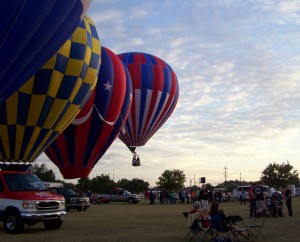It was always hoped, among the rebellious Anglo settlers in the Mexican state of Coahuila y Tejas that a successful bid for independence from the increasingly authoritarian and centralist government of General Antonio Lopez de Santa Anna would be followed promptly by annexation by the United States. Certainly it was the hope of Sam Houston, almost from the beginning and possibly even earlier just as much as it was the worst fear of Santa Anna’s on-again off-again administration. Flushed with a victory snatched from between the teeth of defeat at San Jacinto, and crowned with the capture of Santa Anna himself, the Texians anticipated joining the United States. But it did not work out at least not right away. First, the then-president Andrew Jackson did not dare extend immediate recognition or offer annexation to Texas, for to do so before Mexico or anyone else recognized Texas as an independent state would almost certainly be construed as an act of war by Mexico. The United States gladly recognized Texas as an independent nation after a decent interval, but held off annexation for eight long years. It was political, of course the politics of abolition and slavery, the bug-bear of mid-19th century American politics.
 Sgt. Mom
Sgt. Mom
Committee of Vigilance – 1856 – Finale
(OK, everyone ready for the final chapter? Good!)
Three carriages entered the square, and as they halted before the jail door, the ranks of waiting men presented arms. Half a dozen men descended from the carriages William Tell Coleman and the other leaders of the Committee. They talked for a few moments through the wicket-gate … and then they were admitted into the jail, to speak with Sheriff Scannell.
“We have come for the prisoner Casey,” Coleman told him. “We ask that he be peaceably delivered us, handcuffed at the door immediately.”
“Under existing circumstances,” replied Sheriff Scannell, “I shall make no resistance. The prison and it’s contents are yours.”
“We want only the man Casey at present,” One of the other Committee members added. “For the safety of all the rest, we hold you strictly accountable.”
Committee of Vigilance – Part 2
The shooting of James King political murder disguised as a justifiable response to a personal insult inflamed the city of San Francisco immediately. King, shot in the chest but still clinging to life was taken to his house. Meanwhile, an enormous mob gathered at the police station, and the police realized almost at once that the accused James Casey could not be kept secure. He was removed under guard to the county jail. The indignant mob was not appeased, not even when the mayor of San Francisco attempted to address the crowd, pleading for them to disperse and assuring them that the law would run its proper course and justice would be done. The crowd jeered, “What about Richardson? Where is the law in Cora’s case?” The mayor hastily retreated, as the square already guarded by armed marshals, soon filled with armed soldiers. The angry mob dispersed, still frustrated and furious. No doubt everyone in authority in the city breathed a sigh of relief, confident that this matter would blow over. After all, they controlled the political apparatus of the city, at least one newspaper, as well as the adjudicators and enforcers of the law … little comprehending that this shooting represented the last, the very last straw.
Committee of Vigilance – 1856
When gold was discovered in the foothills of the Sierra Nevada in 1848, it seemed as if most of the world rushed in to California which, until then had been a sparsely-settled outpost of Mexico, dreaming the decades away. The climate was enchantingly mild, Mediterranean warm enough for groves of olive trees and citrus to thrive, and the old missions crumbled away as if nothing had or would ever change. The old, proud Californio families with names like Verdugo, Vasquez, Pico and Vallejo kept vast cattle herds and lived in extensive but rather Spartan-plain estates. There were a few handfuls of American settlers who had come overland, or by sea; they tended to what little trade there was, and an energetic and slightly shady Swiss entrepreneur named Johann Sutter had a vast agricultural and establishment centered around a fortified holding in present-day Sacramento. It was on his property, and in the course of building a saw-mill that gold was discovered. And change came upon the enchanted land and the place called Yerba Buena turned almost overnight from a hamlet of eight hundred souls on the shore of San Francisco Bay into a ramshackle metropolis of 25,000 and more in the space of two years.

